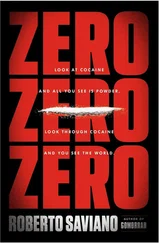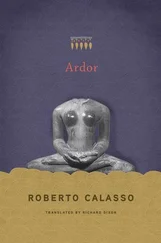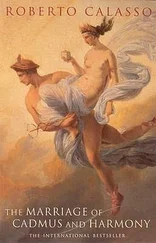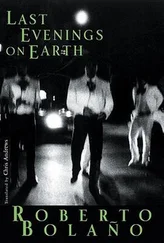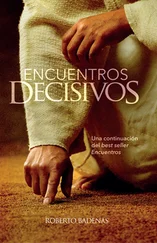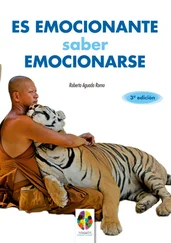King Śiśupāla was saved by the chemical purity of his hatred for Kṛṣṇa, saved because he didn’t repent. He too will enter into the body of Kṛṣṇa, he too will be liberated in Kṛṣṇa. Kṛṣṇa penetrates the ranks of his enemies and does not seek to avoid their wiles, or trickery, with the result that his enemies open a breach in him. All this would be in complete violation of the Law, were it not for the fact that the Law itself demands it, the new Law Kṛṣṇa gave first to the gopīs before showing it to the warriors. Thus, in the successive avatāra , the Buddha’s, the doctrine of the anattā , of the “non-Self,” of the emptiness of every element, the proclaimed inexistence of the intrinsic, the doctrine that dealt an ax blow to the sovereignty of the ātman , of the Self, and hence of the brahman , which is coincident with it, and hence of everything, this doctrine was not only not rejected but welcomed. Why this and not another of the many heresies that were making the rounds? It was welcomed because of the cruel and drastic purity of its opposition to everything the ṛṣis had taught. Yājñavalkya and the Buddha sat face-to-face, but not as enemies. They lived in the same mind now, and each went on pronouncing his own words, without moderating them at all.
Before the battle of Kurukṣetra, Kṛṣṇa enlightened an Arjuna paralyzed with anguish as to the nature of what is. During the battle most of the help he gave Arjuna had to do with the art of deception. And perhaps he never exercised that art so treacherously as in the duel between Arjuna and Jayadratha. A curse hung over whoever killed Jayadratha. His father, Vṛddhakṣatra, had proclaimed that whoever brought his son’s head to the ground, that man’s own head would split into a hundred pieces. The two warriors were fighting it out as the sun’s tawny disk sank in the sky. The moment it was hidden behind the horizon, Arjuna’s word would lose all contact with the truth, because his vow to kill Jayadratha before sunset would have been shown to be vain. “If the truth is lost to Arjuna, it is lost to the world,” thought Kṛṣṇa. It was then that he whispered a few feverish words of advice to his friend: “Cut off Jayadratha’s head cleanly, so that it flies into his father’s lap.” With his supreme ability as an archer, Arjuna aimed the fatal arrow (which he had saved up, honoring it with perfumes and flowers, to kill the killer of his own son, Abhimanyu) so that Jayadratha’s head would fly away from him — right to where Vṛddhakṣatra was sitting at the edge of the forest, absorbed in the ceremony of twilight. Like a stone from the sky, his son’s head, ornamented with extravagant earrings, fell on his knees. Vṛddhakṣatra didn’t even notice. He was a severe ṛṣi , capable of blocking out the world. As soon as his prayer was over, he got up. Jayādratha’s head rolled to the ground, upon which Vṛddhakṣatra’s head was seen to burst into a hundred pieces. The last rim of the sun was sinking down.
What happened in India, from the Vedas to the Buddha, belonged to the trunk of a single tree, the immense aśvattha rooted in the sky, that spread its branches everywhere, covering the earth. What was inside that trunk? Brahman . And what was brahman? The “unique that awakes,” says the Maitri Upaniṣad . The brahman was consciousness and what brings consciousness to birth: the Awakening One. In the end, a solitary monk came to sit at the foot of the tree, which on this occasion was a common fig tree, in Bihar. He told himself he wouldn’t get up until awakening passed from the tree to himself. It was the Bodhisattva who was about to become the Buddha. The tree he was sitting under was called the Tree of Awakening ( bodhi ), and it grew in Gayā, later to be known as Bodhgayā. Many were the pilgrims who went to visit it, for centuries. What they saw was a nyagrodha , a banyan tree with aerial roots. the tree that strangles its guests, but they went on depicting it as an aśvattha , the fig tree that contains within it the seed of fire.
The Tree of Life and the Tree of Knowledge looked like a single tree: when the branches rustled, that was the Vedas who were its leaves, speaking; when the air was still, soma dripped from its trunk, offering life without end. Looking at that huge plant carefully, you saw that there were in fact two trees, inextricably twisted together. One thrust its branches upward, the other toward the ground. They were a śamī and an aśvattha . It was hard to see which was which. On two opposite branches, at the same height, two birds could be made out, “inseparable friends.” One was eating a berry, the other was watching it intensely. To light a fire, you need to rub a twig ( araṇī ) of aśvattha against a twig of śamī , Pushing out its aerial roots, the aśvattha slowly strangles the śamī . Consciousness slowly strangles life. But life exists — or is perceived to exist — only to the extent that it allows the parasite of consciousness to grow upon it.
The first of all stories is vegetable and has no plot. It is the twining of two trees, their perennial and motionless coitus. One’s roots stretch off into the sky; the other’s into the ground. Their branches mingle, some pointing up, some down. Every image of a god embracing his partner—Śiva with Pārvatī, Viṣṇu with Lakṣmi — recalls the shape of the two entwined trees, as if two figures with human limbs had been expelled from those tangled branches, and, joining together, strove to recompose them once again. The many heads, arms, legs, feet, hands that so shocked and frightened travelers when they first discovered the idols of India all testify to the fact that before being what it is now, the human figure was a tree with many branches. There was a time when the thirty-three gods lived not in celestial palaces but among the leaves and branches of that tree. Perched on those branches, they fought enemy snakes coiled around lower branches — and what they were fighting for was the liquid oozing from the trunk that fed all of them, Devas and Asuras alike.
In every story, if you go back, as far back as you can, to the point where every horizon disappears, you find a snake, the tree, water. It’s either a snake that covers a spring of water with its coils or a lump, a knot drifting on the waters, a circular cushion bearing a divine figure as it slithers across the waves. Or a snake coiled around a trunk growing out of the water. And you can also find all this by looking inside yourself, as the Kaṭha Upaniṣad claims some people did long ago (“a certain wise man who was seeking immortality looked inside himself by turning the globes of his eyes back to front”). The snake is coiled around the trunk from which the essence, the rasa , dribbles down, just as the Twisted Goddess, Devī Kuṇḍalinī, wraps her coils three and a half times around the suṣumnā , the vertical stream that crosses the meru , the spine, but also Mount Meru, emerging below the vault of the skull or the cosmos, where Śiva on his lotus throne awaits the awakening call. The stolen cows, the imprisoned oceans, the lost soma —they’re all hidden away in an anatomical recess, where a stream is blocked and begins to seep up through the coils of a snake. Devī awakens, arches up from her residence in the mūlādhāra , the “stool root,” between phallus and anus, climbs the suṣumnā , the rootstock of the lotus, follows the royal way that leads upward, punches through the six cakras , the “wheels” that she finds in her path, like so many archons, becomes Śiva’s sheath, and from their coitus drips amṛta , the “immortal” liquid that irrigates and inebriates every dendrite.
Читать дальше

